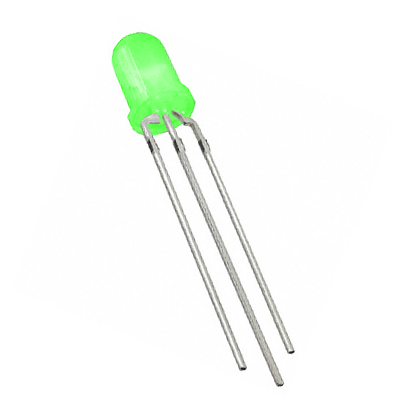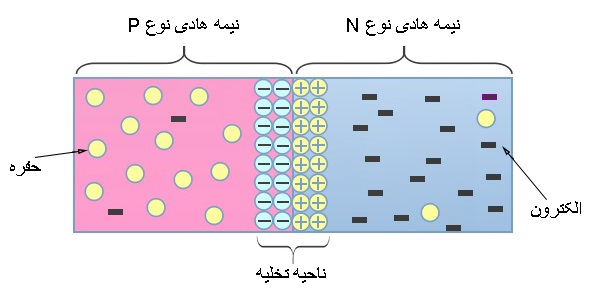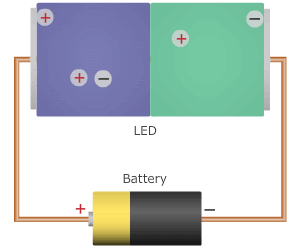_ بخش دیود های LED (دیود های نورانی)
ترکیب (موج اِلکترو_فوتونیک) یا (رنگ هاله) در دیود های LED یا (دیود نور اَفشان)
پژوهشگر و نویسنده: دکتر ( افشین رشید)
_sph0.gif)
دیود LED های R هر کدام یک دیود ساطع کننده نور قرمز، سبز و آبی دارند و می توانند میزان نوری که ساطع می کنند را کنترل کنند که در نتیجه رنگ دلخواه را ایجاد می کند. پیچیده ترین روش، تولید نور LED سفید است. اساساً، دو روش مختلف برای تولید نور سفید دلخواه از رنگ های مختلف نور وجود دارد.
_ یک نوع، یک LED آبی را با یک لایه فسفر ترکیب می کند که نور زرد آن، رنگ سفید کلی را ایجاد می کند.
_ ترکیب رنگ افزایشی همچنین می تواند نور سفید LED را از نور قرمز، آبی و سبز با طول موج های خاص ایجاد کند.
با برقراری جریان در داخل دیود نورانی LED، الکترون های آزاد ( – ) به مدار اتم های فاقد الکترون آزاد ( + ) سقوط می کنند و در نتیجه این سقوط مقداری انرژی به شکل فوتون نور مرئی یا نامرئی آزاد می شود.
LED ها نوعی نیمه هادی به نام "دیود تابش نور" هستند. LED های سفید که با استفاده از LED های آبی روشنایی بالا که بر اساس ماده گالیم نیترید ساخته شده اند ، به عنوان یک منبع نور 4 نوع نور زرد، آبی، سبز ، قرمز از خود ساطع می کنند.LED ها (دیودهای انتشار نور) منابع نوری نیمه هادی هستند که یک نیمه هادی از نوع P (غلظت سوراخ بزرگتر) را با یک نیمه هادی از نوع N (غلظت الکترونی بزرگتر) ترکیب می کنند. اعمال ولتاژ رو به جلو کافی باعث می شود الکترون ها و سوراخ ها در محل اتصال PN نوترکیب شوند و انرژی را به صورت نور آزاد می کنند. در مقایسه با منابع نوری معمولی که ابتدا انرژی الکتریکی را به گرما تبدیل می کنند و سپس به نور تبدیل می شوند ، LED ها (دیودهای ساطع کننده نور) انرژی الکتریکی را به طور مستقیم به نور تبدیل می کنند و تولید برق کارآمد با انرژی کم مصرف می کنند.دو نوع LED وجود دارد ، یک نوع لامپ (سرب) و نوع تراشه (سطح نصب شده). کاربران می توانند بر اساس نیاز مجموعه ، نوع ایده آل را انتخاب کنند.
پژوهشگر و نویسنده: دکتر ( افشین رشید)
دکترایِ تخصصی نانو _ میکرو الکترونیک






